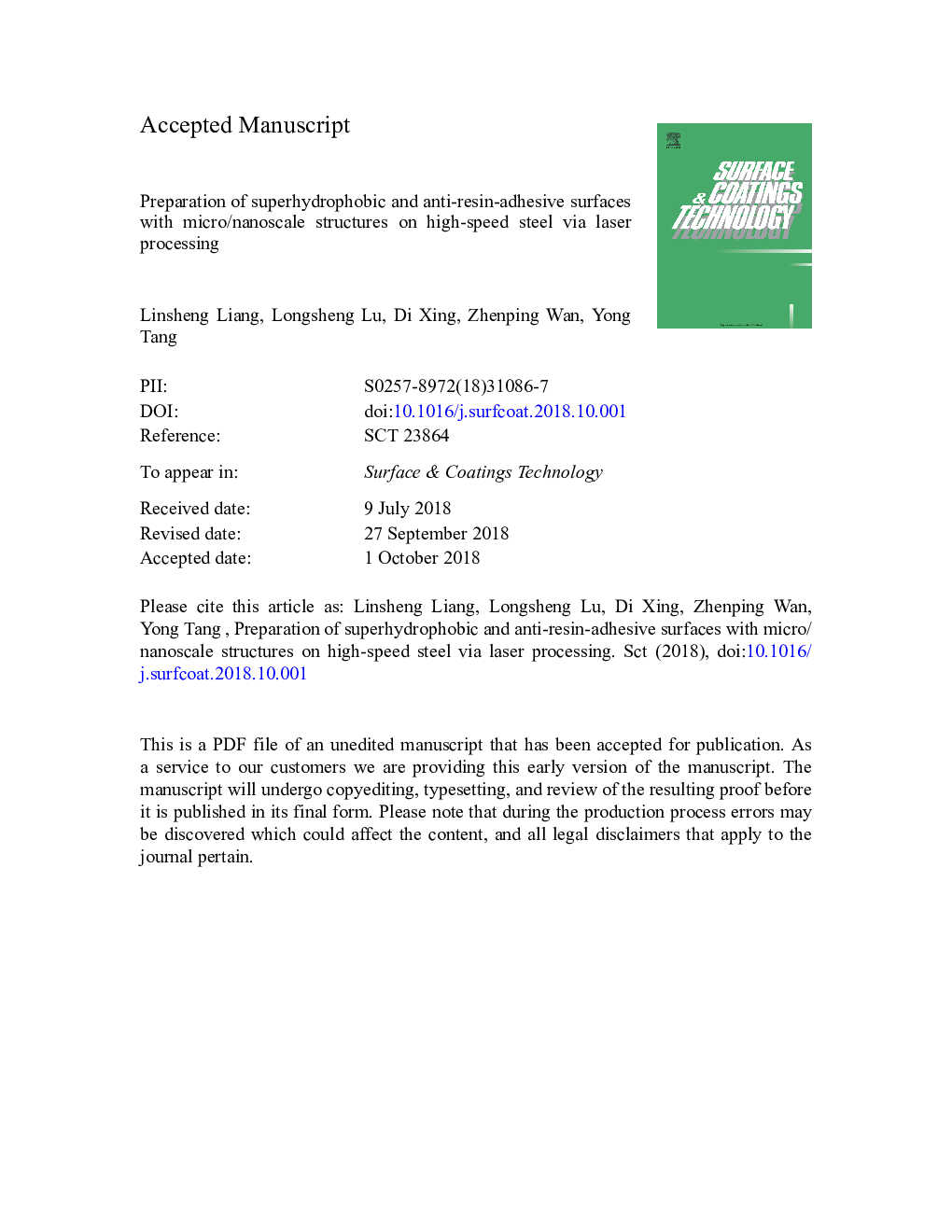| Article ID | Journal | Published Year | Pages | File Type |
|---|---|---|---|---|
| 11008873 | Surface and Coatings Technology | 2019 | 37 Pages |
Abstract
In order to solve problems of high viscous resin adhering on machine or tool surfaces in manufacturing resin based composites, a superhydrophobic and anti-adhesive surface was prepared and investigated. Micro/nanoscale hierarchical structures in shape of volcanic vents were fabricated on high-speed steel surfaces via laser processing. After being hydrophobized by fluoroalkylsilane solution, the microprotruding surfaces showed great hydrophobicity and even superhydrophobicity, with a water contact angle of 157.2° and sliding angle of 2.8°. Besides, the surfaces also displayed low wettability and excellent anti-adhesivity for highly viscous epoxy resin, with a best resin contact angle of 149.7° and sliding angle of 7.3°. As microprotruding diameters and spacings decreased from 500 to 100â¯Î¼m, and heights rose from 14 to 54â¯Î¼m, both water and resin contact angles increased while sliding angles decreased. The decrease of microprotruding diameter and spacing as well as the raise of height could increase surface roughness, enlarge air-liquid interface fraction and reduce actual contact area between liquid and the steel surface. Thus the wetting mode of the microstructured surface changed from Wenzel's mode to Cassie's mode, leading to a reduction of wettability and an enhancement of anti-resin-adhesivity on the surface.
Related Topics
Physical Sciences and Engineering
Materials Science
Nanotechnology
Authors
Linsheng Liang, Longsheng Lu, Di Xing, Zhenping Wan, Yong Tang,
